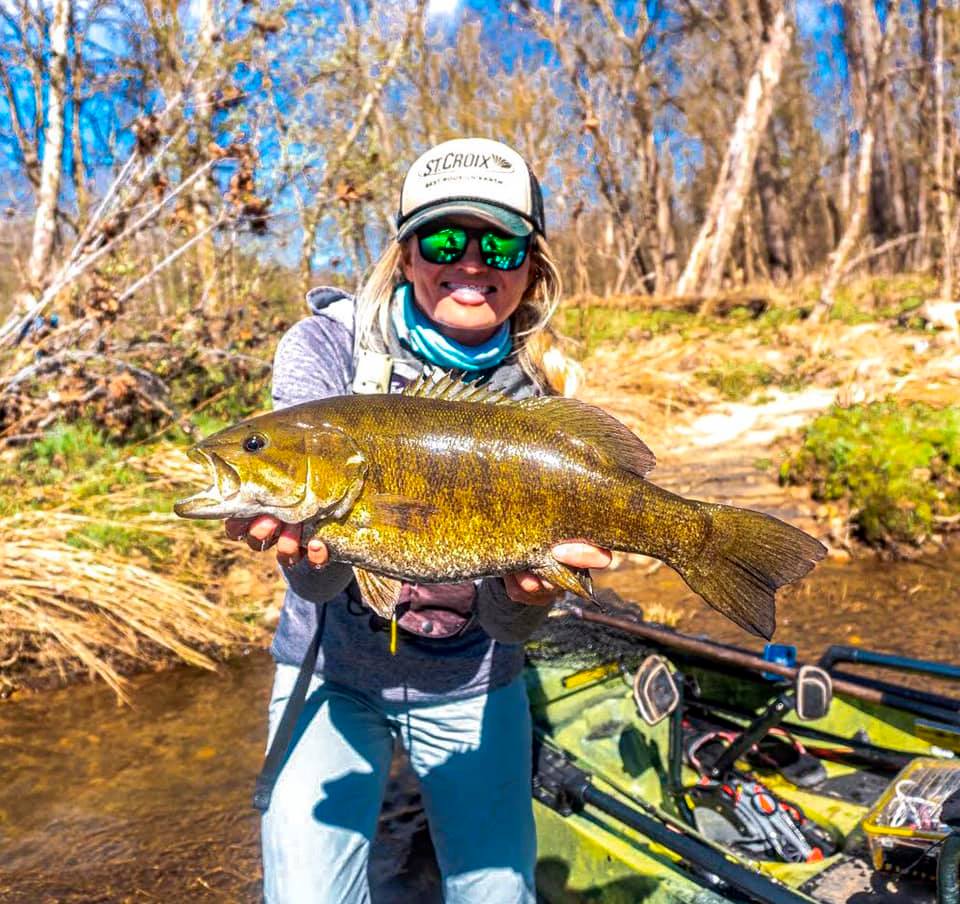Bass anglers love big water with good reason. Reservoirs and rivers are ideal places for catching bass. And smaller lakes and farm ponds can also be killer spots to catch the fish of a lifetime. But I’ll bet most of you drive by quaint little creeks and don’t consider that there may be a lunker lurking in the shallows.
As a kayak angler with a passion for finding remote, untouched waters, I often park on the side of a bridge, and launch my kayak down steep banks to access these places. Sometimes, it winds up being a lot of work for little or no success. But I have also been rewarded with some of the most memorable trips, and trophy bass of my career.
So, when and how do these big bass move up into these small creeks and streams? How should you target them?
Here are a few tips to get you started creek-hopping for big bass.
Look for Bigger Waters Known for Big Bass
There are a few important things I consider before deciding to fish a creek. I like to do a little research on the creek itself if I can. First, I look at the bodies of water it runs into or comes out of. If the lake or rivers that connect to the creek are known for big fish, that tells me that there is a possibility that these fish can move into the creeks. I also look at the structure of the creek. If there are a lot of cuts into the bank and exposed tree roots that are half submerged in the water (places big bass seek shelter), then I go for it.
Focus on Healthy Water

Next, I consider the water quality. Sometimes you’re able to tell that the area is healthy by just looking at the water. If baitfish are present, and the water has a little flow and good color, then it’s a good creek to fish. Also, during the summer months when the water temperatures on the lake skyrocket, small spring-fed creeks can be hotspots this time of year, because the bass are seeking cooler water. Some creeks also have small pools that fast water is running into and out of, which oxygenates the water. These are some of the best places to find fish in the heat of summer. Look for small waterfalls caused by beaver dams too. Sometimes rural county roads actually pass through these creeks and can cause the same affect as a beaver dam, cascading the water down the creek. Bass will definitely hang out in both these areas.
Use the Right Tackle
Once you’ve done your research and see that the water quality is good, it’s time to fish. For clear, shallow water, I like to throw natural-colored weightless plastics like flukes and stick baits. Small finesse jigs and small top-water baits can be very affective also. One thing to keep in mind is that you’re likely going to be fishing tight quarters, so shorter rods are more accommodating. You want to move slowly up the creek if possible, and even get out and wade if possible. That will decrease your chances of spooking fish.
Read Next: How to Catch Smallmouth Bass in Moving Water
What Kind of Habitat Should You Target?
For skinny-water bass, I look for deep troughs and cut banks, at the bases of exposed roots or the channel side of the creek. If any current is present, always fish the current seams. Make long, quiet casts when fishing these areas.
More times than not, bass seem to come out of nowhere. Even a shallow bank with overhanging grass can have a big fish nestled just out of sight. So, fish every cutout along the banks. Cast into every rock and piece of wood. You never know what’s lurking in these secluded places
Although these areas can require a little more work, and a much different approach than traditional big-water bass fishing, make the extra effort. If you’re fishing a creek that’s far-removed from the hustle and bustle (and fishing pressure) of the river, you’re going to catch fish. Maybe it won’t be as many, but you won’t have any competition and the fish will be much more relaxed. Plus, there are some damn big bass in these small waters. Trust me on this, fishing small water is worth the reward.

